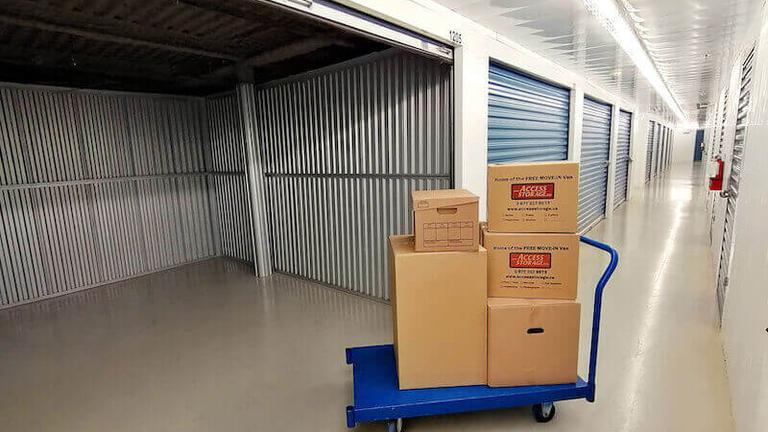
Yes, the photo is a bit of an exaggeration – but pest control is crucial for self-storage facilities. Both owners and tenants must work together to keep pests at bay. Here’s what you need to know about your responsibilities and how to maintain a pest-free environment.
Why Pest Control Matters
Pests like rodents, insects, and birds can cause significant damage to stored items. Rodents chew through materials like cardboard, wood, and even plastic. Insects can damage fabrics, papers, and stored food items. Keeping these pests out not only protects your belongings but also maintains the facility’s reputation and cleanliness.
Common Pests in Storage Units
- Rodents: Mice and rats are the most common pests. They can cause extensive damage by gnawing on materials and leaving droppings.
- Insects: Ants, cockroaches, and spiders often find their way into storage units. These pests can damage stored goods and create unsanitary conditions.
- Birds: Birds can sometimes enter storage units through open doors or small gaps. They can leave droppings and cause contamination.
- Seasonal Variations: Pest activity can vary by season. Rodents often seek shelter during colder months, while insects are more active in warmer periods.
Owner Responsibilities
- Regular Maintenance and Inspections: Owners should regularly inspect the facility for signs of pests. Look for droppings, gnaw marks, nests, and dead insects. Check for cracks, gaps, and holes where pests might enter.
- Pest Control Services: Hiring a professional pest control service is essential. Regular treatments and inspections by experts help prevent infestations and address any issues promptly. They can tailor solutions to the specific needs of the facility.
- Education and Communication: Owners should inform tenants about pest prevention. Provide guidelines and tips on how to store items properly and what to avoid storing. Clear communication helps tenants understand their role in maintaining a pest-free environment.
- Facility Upkeep: Maintain the infrastructure of the facility. Ensure doors, windows, walls, and roofs are sealed and in good condition to prevent pest entry. Regular maintenance reduces the risk of pests finding their way inside.
- Prompt Response: If a tenant reports a pest issue, act quickly. Investigate and address the problem to prevent it from spreading. A prompt response can stop a small issue from becoming a major infestation.
Tenant Responsibilities
- Proper Storage Practices: Store items in sealed plastic bins instead of cardboard boxes. Avoid storing food items that can attract pests. Proper storage practices reduce the likelihood of attracting pests.
- Cleanliness: Keep your storage unit clean and free from clutter. Regularly check and clean your unit to prevent infestations. A clean unit is less likely to attract pests.
- Reporting Issues: If you notice any signs of pests, report them to the facility management immediately. Early reporting can prevent a small problem from becoming a big one. Don’t wait until the issue worsens.
- Complying with Guidelines: Follow the pest control guidelines provided by the facility. Use recommended packing materials and adhere to storage rules. Compliance helps ensure that everyone is working towards the same goal.
- Moisture Control: Pests are attracted to moisture. Ensure your items are dry before storing them. Fix any leaks or issues that might cause dampness.
Working Together
- Inspections: Both owners and tenants should inspect their areas regularly. Owners check common areas and the exterior, while tenants inspect their units. Regular inspections help identify and address issues early.
- Communication: Open communication is key. Tenants should feel comfortable reporting issues, and owners should keep tenants informed about pest control measures. Collaboration and transparency make a big difference.
- Shared Responsibility: Maintaining a pest-free environment is a shared responsibility. Both owners and tenants need to play their part to ensure the facility remains clean and safe. Working together makes a big difference in preventing and controlling pest problems.
- Continuous Improvement: Both parties should be open to feedback and continuously look for ways to improve pest control measures. Staying proactive helps in adapting to new challenges and ensuring long-term pest prevention.
By understanding and fulfilling these responsibilities, both owners and tenants can ensure a safe, clean, and pest-free storage environment. Working together makes a big difference in preventing and controlling pest problems. A collaborative approach ensures that everyone’s belongings remain safe and intact, maintaining the facility’s reputation and reliability.






